Five Objects in White
Literal highlights from the Pavilion of Art & Design during London’s Art Week
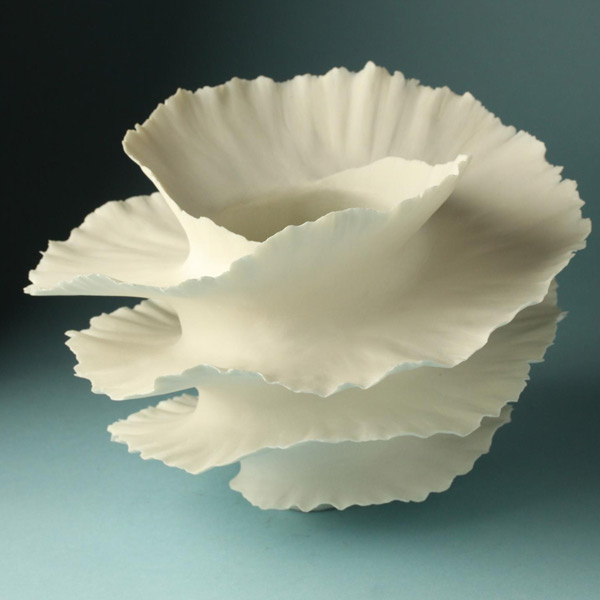
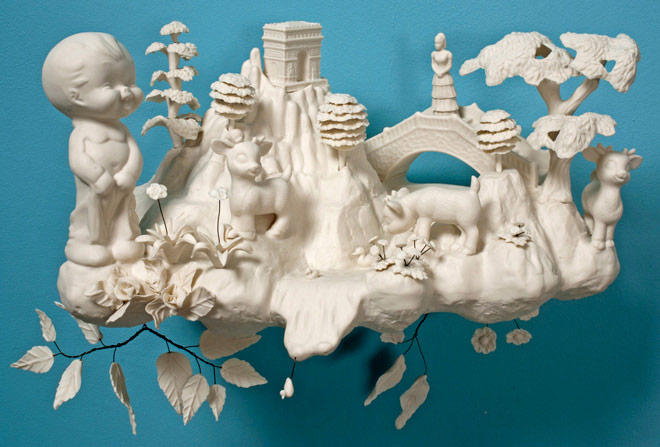
Now in its fifth year, the Pavilion of Art & Design gathers the most exclusive European galleries under one large, pink tent in Berkeley Square to show their beautiful objets d’art and design as part of the ever-growing London art week—with PAD serving as a more boutique-like alternative to the nearby behemoth Frieze Art Fair.
This year, we went on a quest to pick out the most striking contemporary works from the 20th-century art and furniture collections. Five very different works grabbed our attention, united by their minimal white expression.
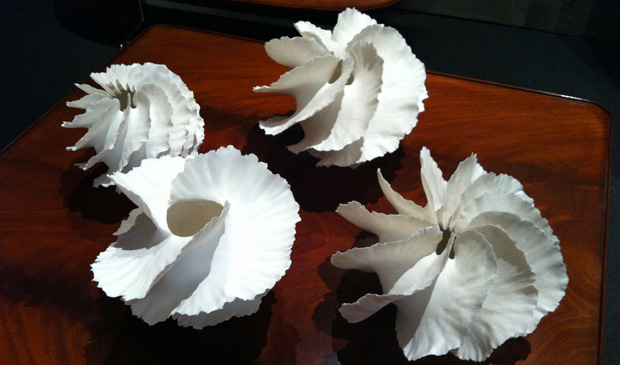
Sandra Davolio‘s beautifully-delicate white porcelain vessels were the standout at the Modernity Gallery. Created by an Italian ceramicist living in Denmark, the pieces combine typically-Scandinavian aesthetic restraint with the floral Italian character of spiraling petals.
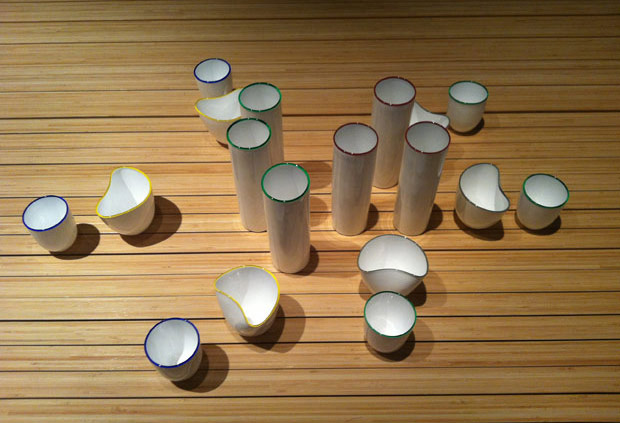
Another Italian adopting new cultural roots is Paola Petrobelli, a former molecular biologist who now works as a glass artist in London. Her 2011 Centrotavola collection of small white Murano glass vessels with brightly-colored rims was created for the Perimeter’s “What’s on The Table” project. Paula explains that for these minimal creations she wanted to “strip both the idea of centerpiece, and that of Murano glass of their connotation of frills, but retain at the same time their playfulness.”
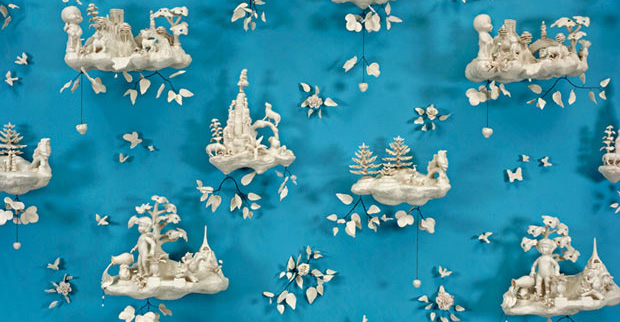
Also distinctly playful is Beth Katleman‘s dramatic “Folly” (2010) at Todd Merrill Studio. Fifty suspended white porcelain sculptures throwing shadows across a turquoise backdrop come together as a kind of 3D wallpaper installation, which Katleman describes as a contemporary interpretation of traditional 18th-century Toile de Jouy fabrics.
At once refined in appearance and kitsch in subject, this work plays with notions of valuable antiques and knock-off trinkets. Katleman says, “Porcelain suggests luxury refinement and royal provenance. While one flea market treasure seems a little sad, a florid profusion of them is cause for celebration.” Folly will be on show this Fall at the Museum of Art and Design in New York.

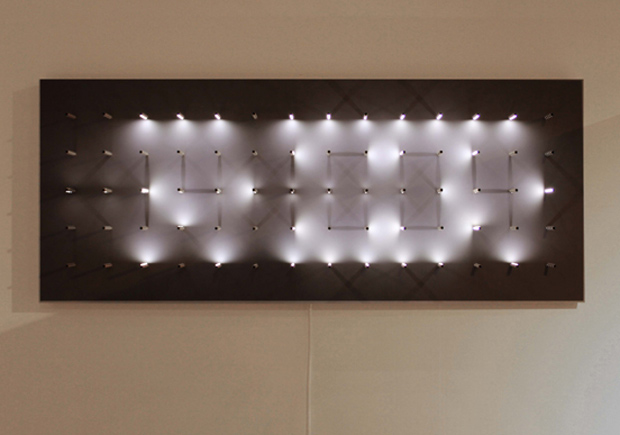
Rolf Sachs’ pleasantly clinical “Light Chemistry” (2011), on show at Dutch gallery Priveekollektie, serves as a direct contrast to Katleman’s Folly. Sachs’ work stood out for being both practical and beautiful, using ready-made objects in an intriguingly-sculptural way. The designer’s use of typical laboratory equipment in a surprising skeletal contraption—a retort stand becomes the spinal cord, flasks are used as organs and electrical wires as veins—gives the appearance of an illuminated 3D biological drawing.
Finally, we were treated to Random International’s annual showing of their new work at the Carpenters Workshop Gallery. “A Study of Time #1” is as beguiling as any of this cutting-edge studio’s previous works. At first, the wall installation appears to be a digital dancing-light sculpture, until you become aware of the shadows cast by the LED lights, arranged on a grid of protruding rods. The shadows are created by an autonomous algorithm that illuminates the LEDs in sequence, so that numbers telling the time are briefly thrown across the white Corian base, before being absorbed back into a recurring light show. This ephemeral take on the clock as light and shadow was inspired by rAndom International’s recent scenography for the contemporary dance piece, “Far,” by Wayne McGregor at Random Dance.









